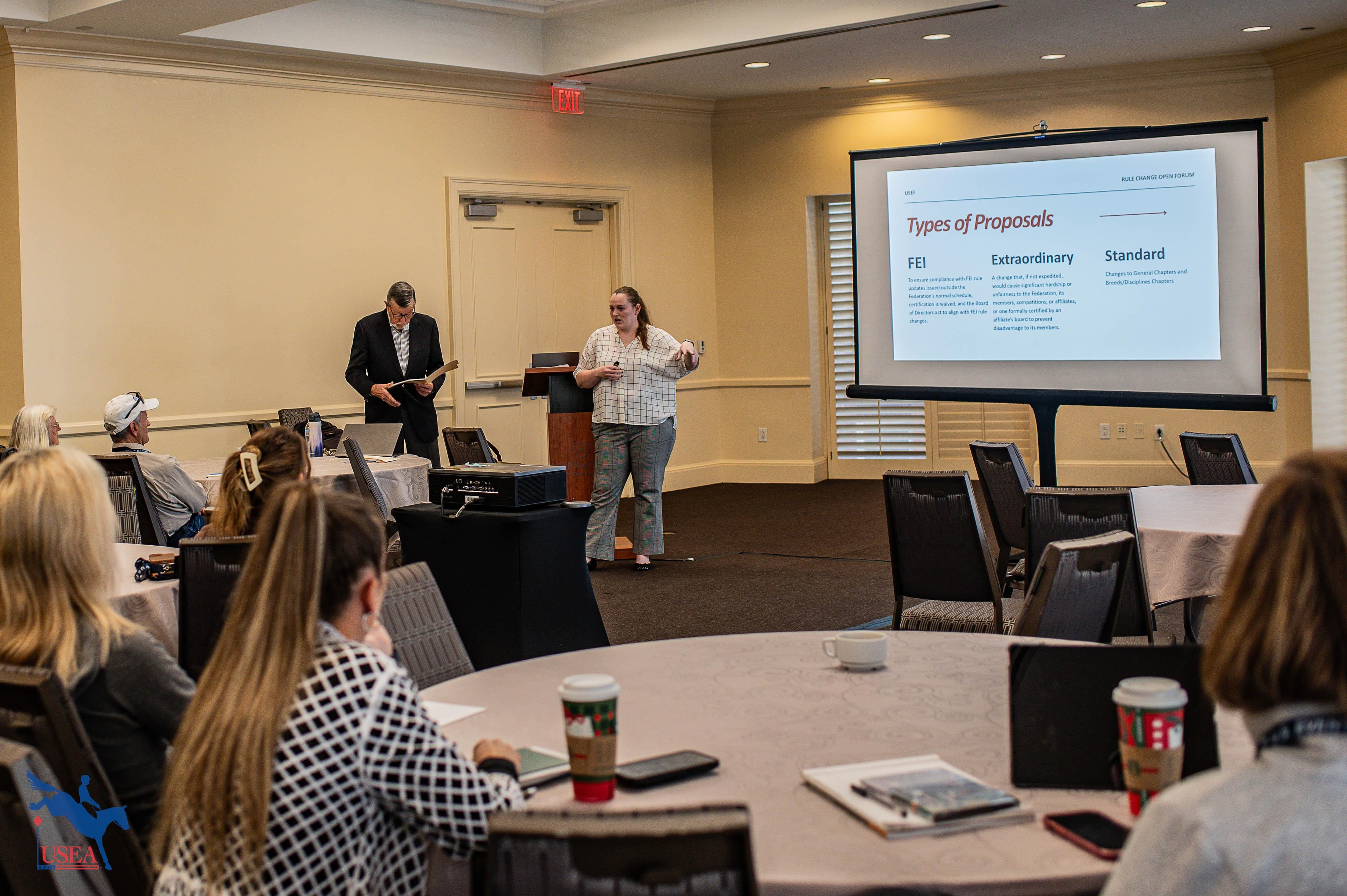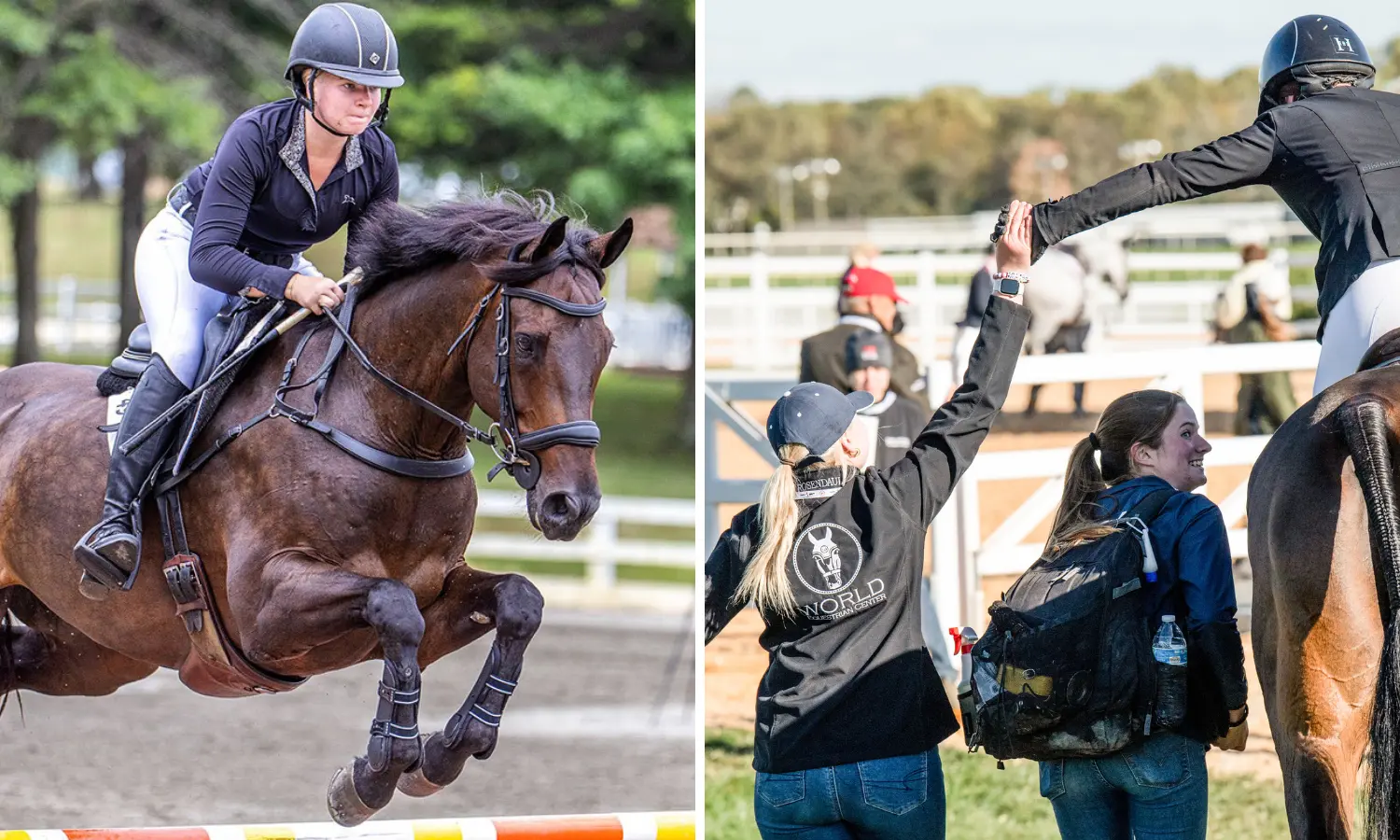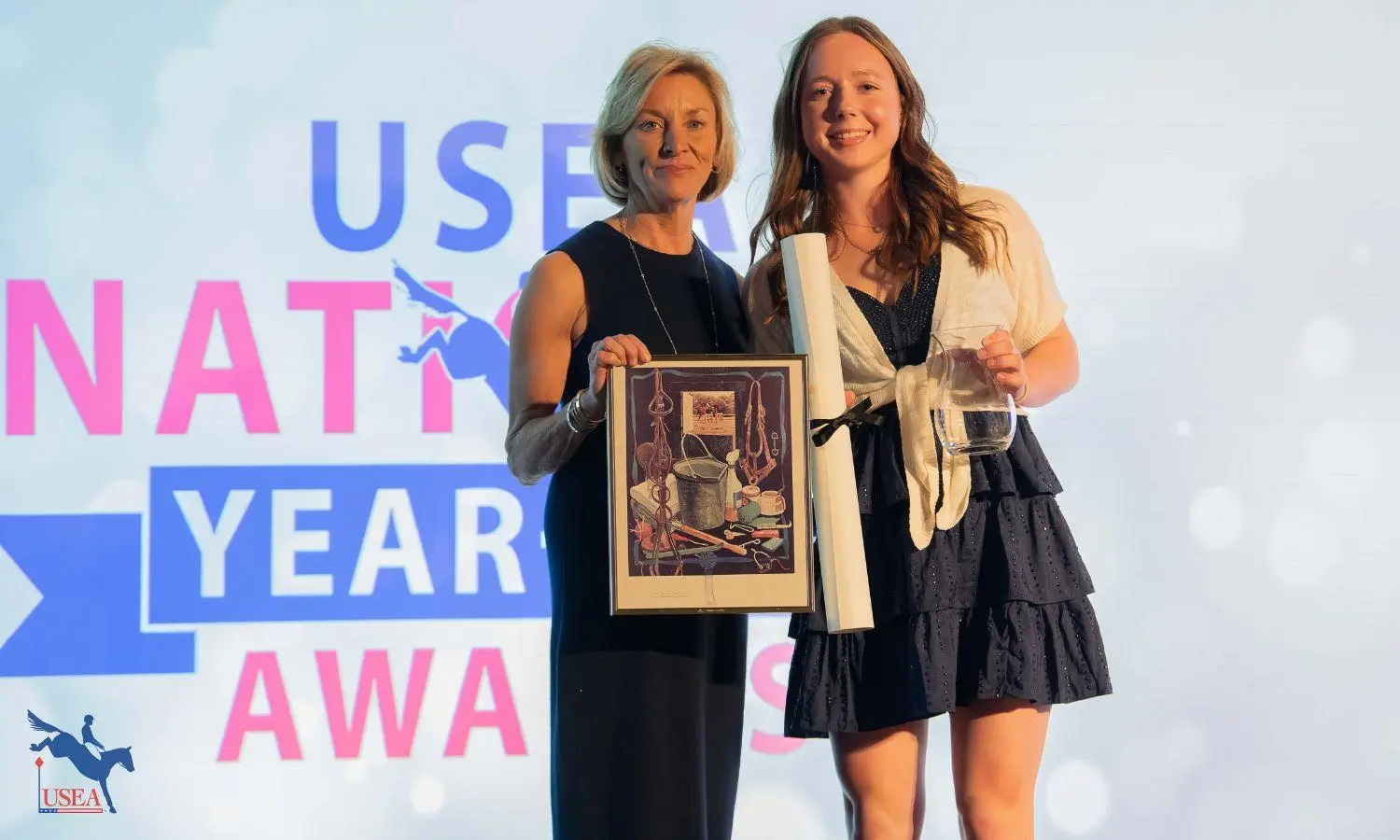Small Circles, Big Impact: Bec Braitling Focuses on Flatwork on Day 1 of EA21 Central Clinic
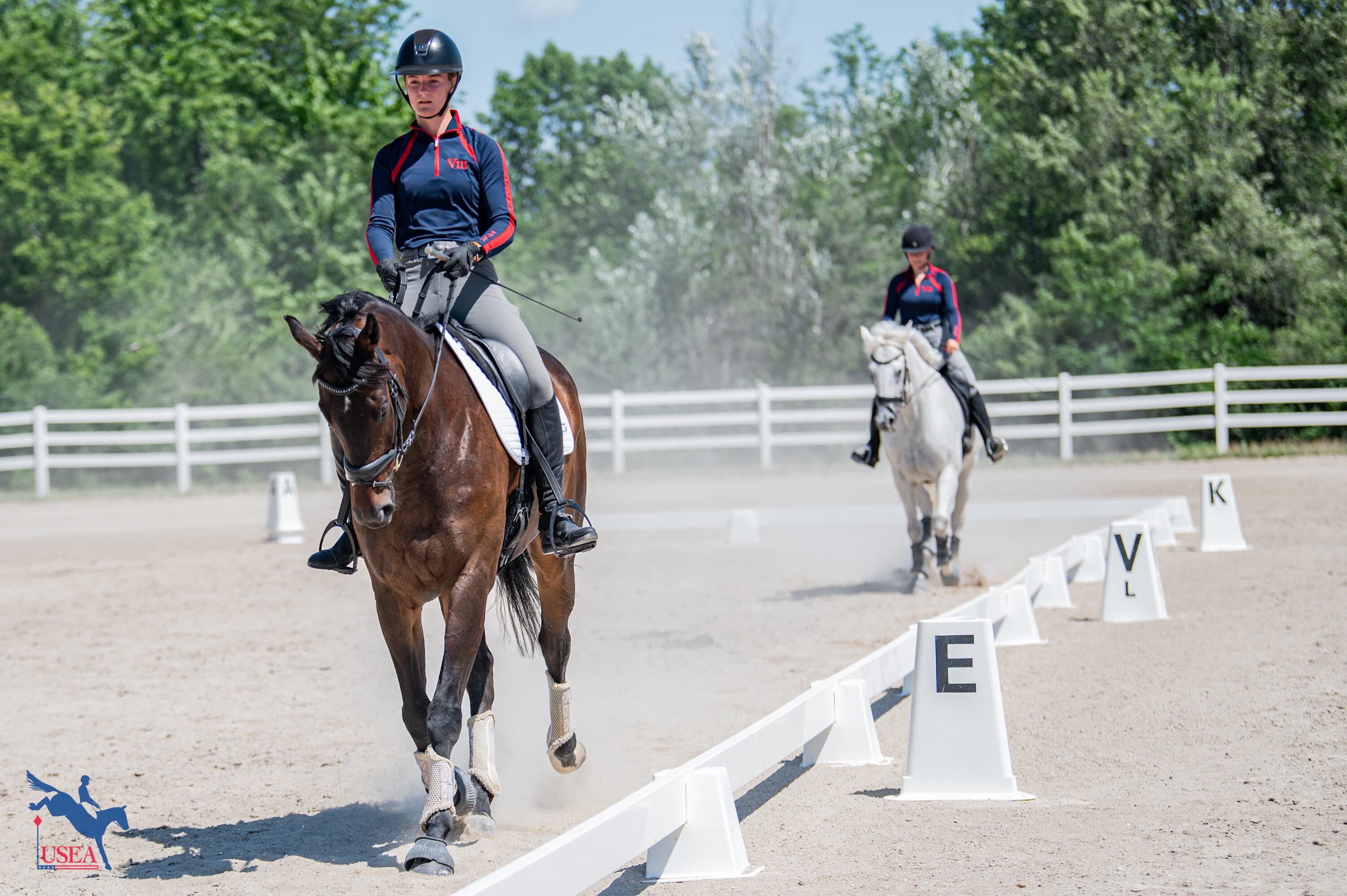
Kansas City, Mo.—June 18—Each of the twelve riders selected to participate in the 2024 USEA Emerging Athlete U21 (EA21) Central Regional Clinic comes from different backgrounds. Some have begun their FEI careers, while others are gearing up for a Modified move up, some are on experienced schoolmasters, while others are on catch rides or greener horses. EA21 Coach Bec Braitling took that into account when brainstorming what the lesson plan for flatwork day at the Central Clinic might look like.
“I’ve obviously seen David [O’Connor] do his four circles exercise a lot, but what was interesting was that I rode my Advanced horse with Laura Collett this year and she did a similar exercise, only with more circles throughout the dressage ring. It was really helpful because I feel like it helped me connect some of the things that I get frustrated by when riding.”
O’Connor’s iconic four circles exercise asks a rider to execute a 10-meter circle in every corner of a dressage ring and Collett’s exercise challenged riders to also execute a circle on the long side at B and E. As Braitling thought back on the ‘ah-ha’ moments she had while riding this exercise and considered the German Training Scale, she felt it might be just the perfect way to fairly ask each of these very different riders to challenge their flatwork skills.
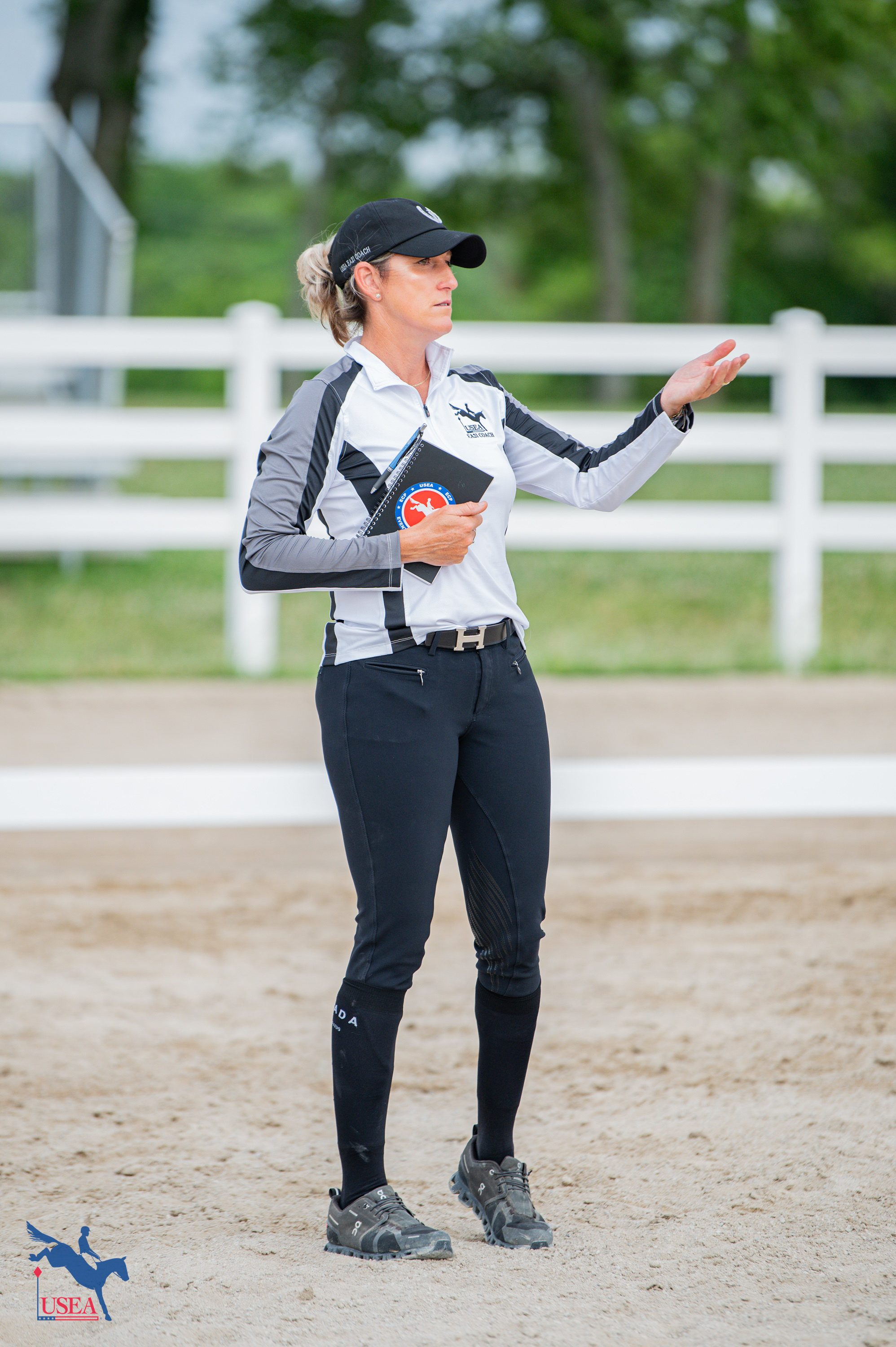
“It’s the one thing, not being a lateral movement, that you feel everyone could do to achieve a level of connection, whether the 5-year-old Thoroughbred turns up or the four-star horse,” she continued.
Braitling kicked off the morning touching on some important notes to remember before they dove into the exercise.
“When someone says to you, ‘Add more leg,’ what part of the leg are you using?” She asked. “The upper leg doesn’t help you in dressage. The knee down should be its own entity. Some horses you will keep that lower leg quiet, there is a time when you don’t need more leg. Others will need quite a bit more. Your lower leg creates energy.”
She also reminded riders that the reins are not there to control the pace of the horse.
“If you are using the reins to control your speed, you’re in trouble. When you use reins for speed control, you end up with a horse with a tight neck. If you can’t let go because they’re going to speed up, you wind up holding them back and the neck gets short. That is where today’s exercise comes in. To control the pace, you need to use transitions. I like to do a lot of canter, walk. You can also use trot to canter. Doing those transitions on a small circle creates the next step to self-carriage.”
Throughout the day, Braitling asked riders to check in on what aids they were using effectively and which they were not quite as strong in. She wanted to see riders truly engaging with their seat to help adjust the momentum that their horse was traveling forward with.
“Your seat controls the rhythm, the tempo, and the length of stride,” she reminded. “This is the most useful aid on the horse as you find yourself moving up the levels.”
The first pair to demonstrate Braitling’s circling exercise were Camryn Chung (Dallas, Texas) and Ava Davis (Jamesville, Minnesota).
After warming up, Braitling sent Chung and Davis out on the rail on opposite ends of the ring and had them start with 20-meter circles at the end of the ring before moving on to executing 10-meter circles at each corner. Once the riders perfected that, she had them add in the additional circle along the long side so that each pair was creating eight 10-meter circles over the ring. Occasionally, Braitling would ask the riders to cut across the diagonal after completing a circle in the center to change the direction.
“We are thinking about balance and how it affects the impulsion,” noted Braitling. “Instead of just doing a lot of exercises or test work, I want you to feel how you can improve the quality of your horse.”
Chung was riding her experienced Preliminary mount Carlos while Davis was aboard her Thoroughbred mare Bird who had just moved up to the Training level this year. The two horses couldn’t have been more different types, and Braitling was excited to initiate the biggest challenge of her lesson plan of the day once each horse and rider pair had a solid understanding of the exercise.
“Great job! Now switch!”
Each rider dismounted from their own horse and hopped in the saddle of their partner’s horse to recreate the same exercise on a new ride.

“I thought, especially for this pair, that this would be a really cool thing for the both of them to experience. It’s huge for their education because it highlights the things that their own horse sort of lets them hide,” Braitling commented after watching Chung and Davis navigate the exercise with their new mounts.
Throughout the day, the remaining pairs entered the ring to take part in the circling exercise. Some pairs worked more on trot work, others worked more on adjustability, while others spent extra time on the transitions both upward and downwards, but the core of the exercise stayed the same—using circles to help riders learn how to use their seat and other aids effectively, while also getting the horse listening for what was coming next. And once the riders had it perfected on their own horses, they had to swap with their counterparts.
“The funny thing is with the switch riding today, we couldn’t have done better making sure there were sort of opposite horses each time for each rider,” said Braitling at the end of the day. “I thought it was especially cool that each rider got to experience something very different to what they were riding, but still apply the same concepts to their ride.”
With this being Braitling’s third year coaching in the EA21 program, some of the riders she saw today were riders she had coached previously, while others were new talent for her to observe. At the end of the flatwork day, she was excited about the team of riders who were selected to participate in the Central Clinic.
“We have a very strong crew here,” she noted. “I feel like every year, the kids are stronger in their base of skills. It doesn’t mean that they have ridden above a certain level, but their understanding of the basics is growing stronger every time, which is really important because that is what we are going for.”
Tomorrow the riders will turn their attention to applying the skills they improved upon in today’s flatwork session to show jumping exercises set forth by Braitling starting at 7:00 a.m. CST.
The Participants
Central | Longview Horse Park | Kansas City, Missouri
- Camryn Chung
- Ava Davis
- Sierra Fishell
- Addison Hagan
- Megan Hopkins
- Scarlett Peinado
- Finley Powell
- Willow Schwartz
- Eva Taylor
- Sierra Thomas
- Abigail Williams
- Brett Youssi
- Waitlist: Ava Staton, Katherine Hyndman, Annabelle Friend
Don't forget to follow the USEA’s coverage on social media!
Facebook | Instagram | Twitter
About the USEA Emerging Athlete U21 Program (EA21)
The purpose of the USEA Emerging Athletes U21 Program (EA21) is to identify and provide consistent quality instruction to the next generation of elite event riders. The aim is to create a pipeline for potential team riders by identifying and developing young talent, improving horsemanship and riding skills, and training and improving skills and consistency.
The USEA Emerging Athletes U21 Program was launched in 2022 with a model of five summertime regional clinics taught by selected USEA Eventing Coaches Program (ECP) instructors, leading to a winter national camp consisting of selected Young Riders from the regional clinics. Athletes who are 21 years or younger, are current members of their USEA Young Rider Area program, and are established at the Training Level or higher, are eligible to apply for the EA21 program. Click here to learn more about the USEA EA21 Program.
The USEA would like to thank ARMA, Kerrits, PulseVet, Ride iQ, Sidelines Magazine, Schneiders Saddlery and #WeRideTogetherfor sponsoring the USEA Emerging Athletes U21 Program.













